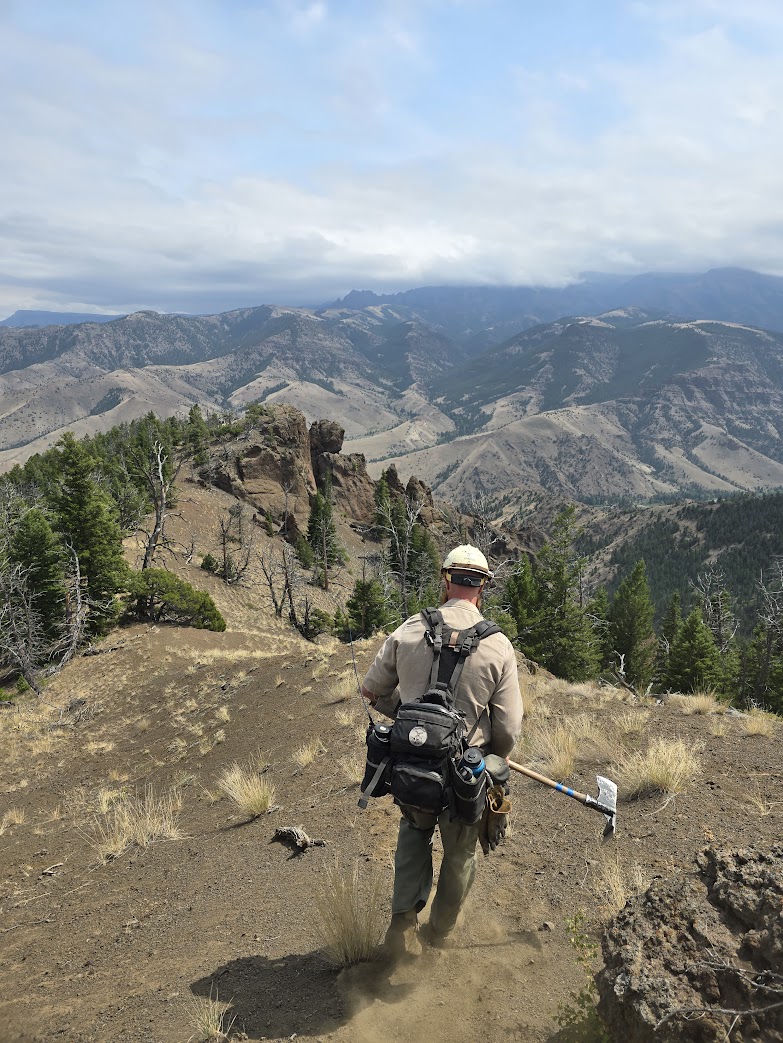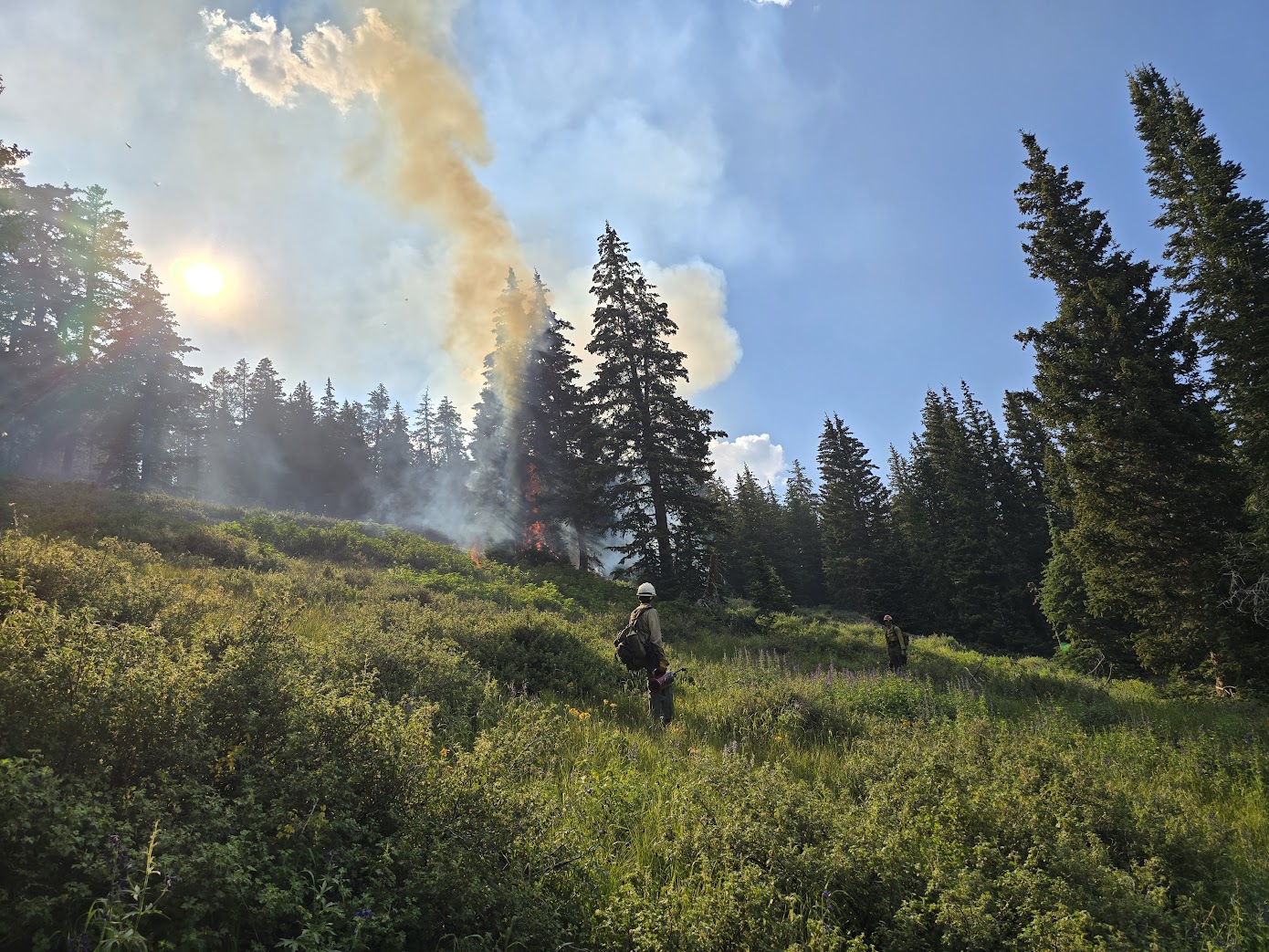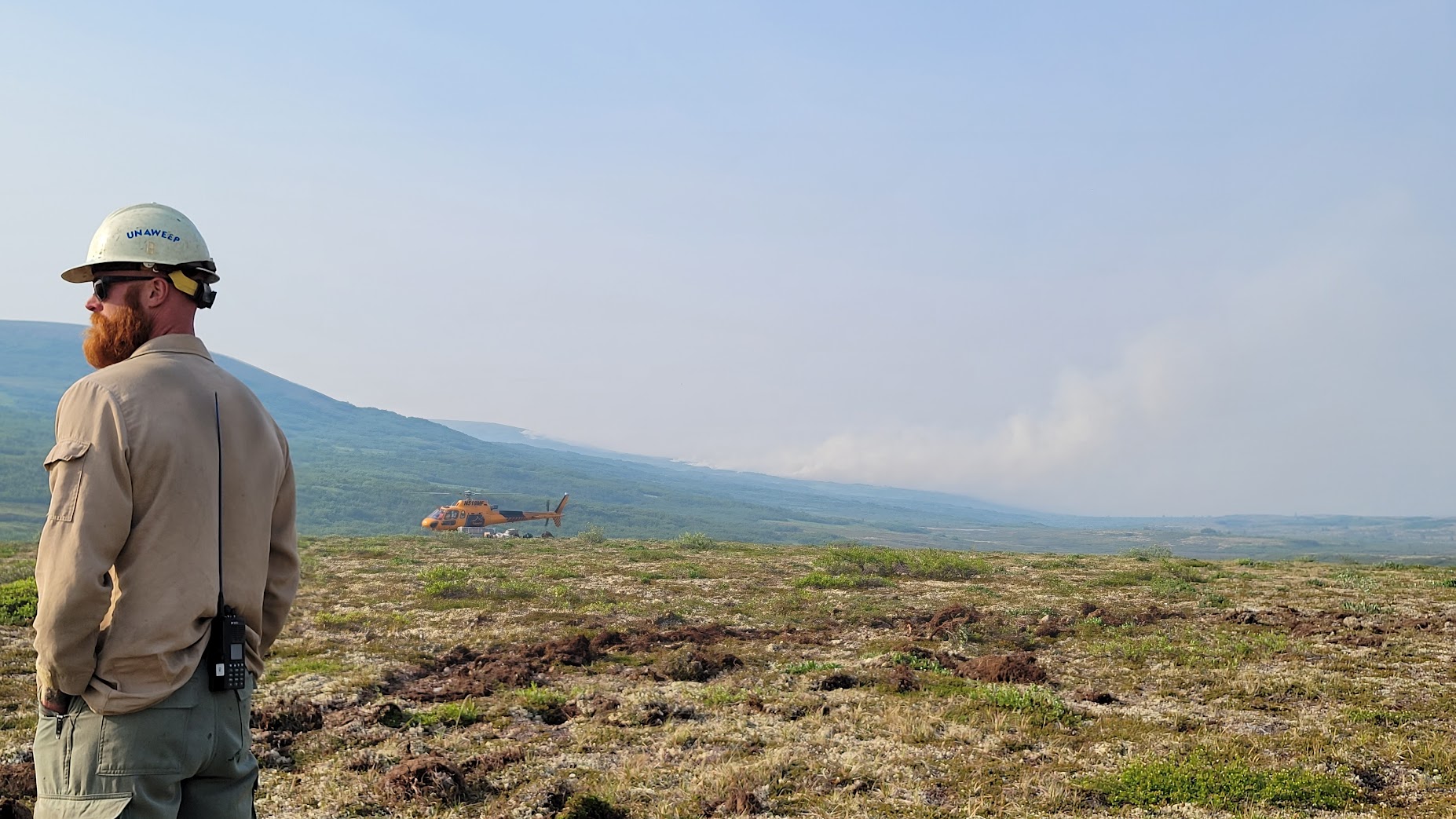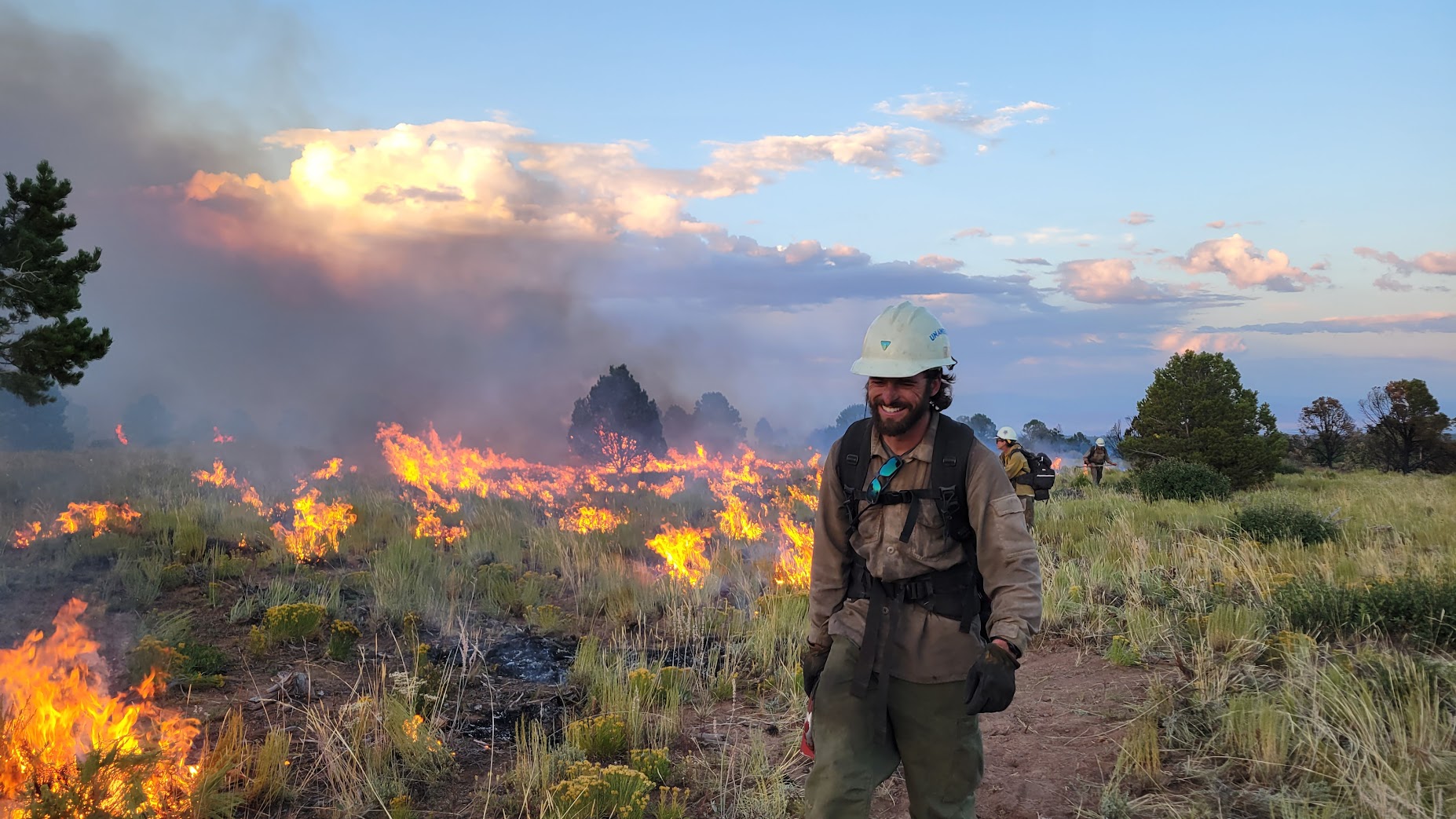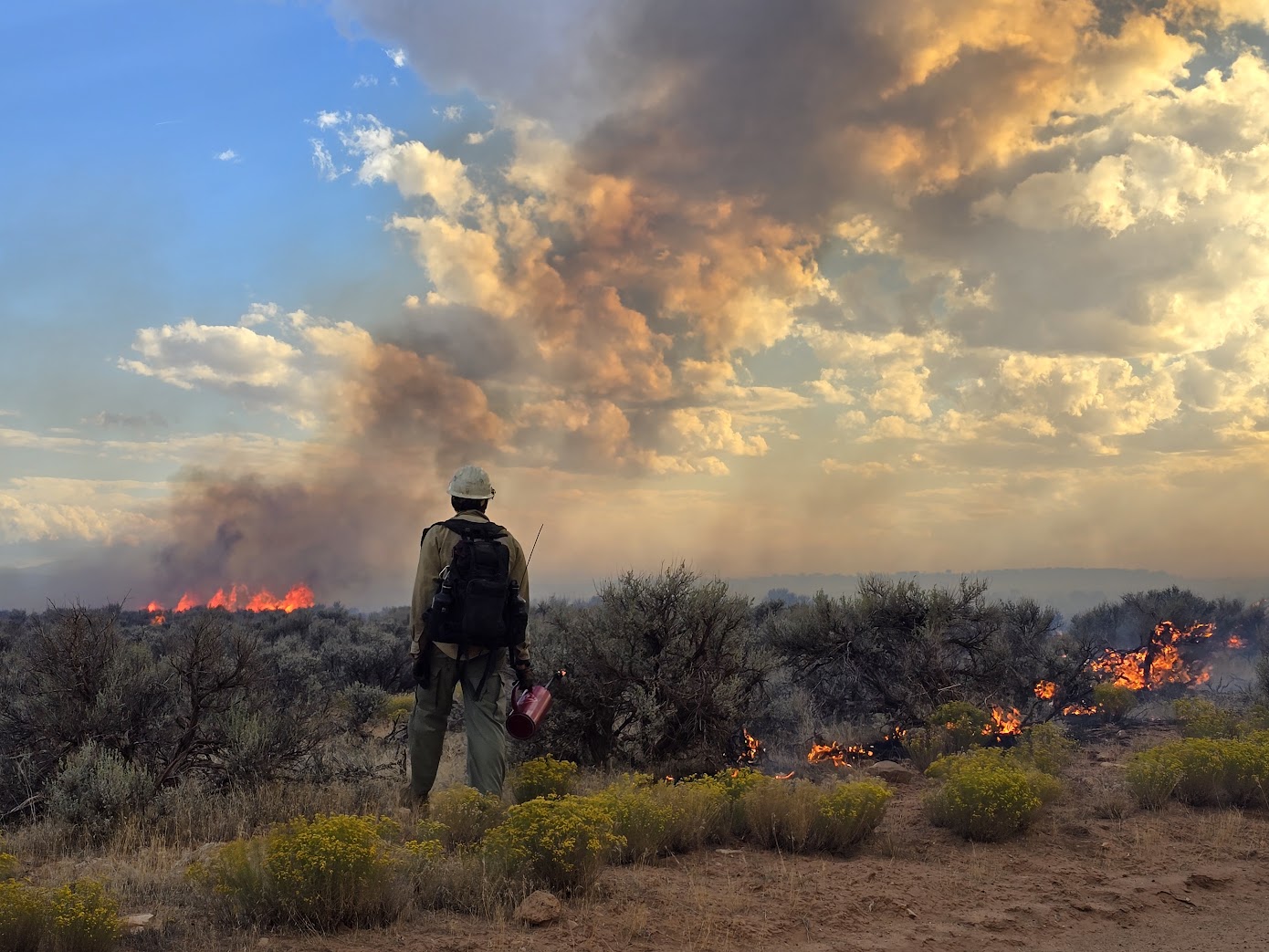About Us
Vision/mission statement or core values:
The primary mission of a Wildland Fire Module, or WFM, is to provide an innovative, safe, highly mobile, logistically independent, and versatile fire module with a primary commitment to maintain fire’s role as a natural ecological process for wildland fire management and incident operations. - Interagency Standards for Wildland Fire Module Operations, PMS-430.
Priority #1: Assist with prescribed fire and wildland fire incidents managed by BLM Colorado, and as well as other neighboring BLM State organizations.
Priority #2: Provide support to national interagency programs (BLM, USFS, NPS, FWS, BIA) with the use of fire (wildland fire and prescribed fire), in the areas of planning, intelligence gathering, fire line operations (firing, holding, aircraft usage, etc.), and fire behavior monitoring.
Priority #3: Assist/lead projects involving fire effects, mechanized hazard fuels reduction, and other fuels treatments for the BLM and other land management agencies across the country.
Crew duties:
Unaweep WFM is a type 1 resource with national availability traveling to multiple geographic areas from May-October. Frequently, the crew is assigned to resource benefit fires in which we can provide a wide range of qualifications, from overhead to fire effects monitors, while also using GIS skills to create maps, IAPS, etc. We strive to be logistically self-sufficient utilizing prepared crew meals, water filters, solar panels, satellite communications, UTV’s, etc...to be as logistically low maintenance as possible to Fire Management Organizations and Incident Commanders. We typically camp in remote locations, providing 24/7 intelligence gathering, fire monitoring, firing operations with ground personnel, and Uncrewed Aircraft System (UAS) capabilities utilizing infrared, videography, and aerial ignition.
In the shoulder seasons, Unaweep is engaged in project work with the Upper Colorado River Fire Management Unit and Colorado State BLM fuels management staff assisting with mechanical treatment (lop & scatter/cut & pile/pile burning). Also, we take pride in training staff in prescribed fire burn plan writing, administrative duties, preparation of control lines, and career development participating as cadre instructing NWCG courses.
Crew station/facilities:
Unaweep is stationed at the Grand Junction Air Center. A new facility is under construction and projected to be finished in 2026, where we will have a shared facility with the air tanker base. This new facility will have an overhead office, crew office, training and conference room, kitchen, showers, fitness center, and covered parking for fire vehicles. No government housing is available for temporary or permanent appointments.
Training:
The crew typically begins full staffing and coverage in mid-April with 2 weeks of training involving; medical refreshers and scenarios, RT-130, crew cohesion exercises, physical training, equipment preparedness, initial attack readiness, and prescribed fire for on-the-job training. Also, the crew will prepare and facilitate as lead instructor or cadre in local NWCG course offerings.
Unaweep UAS pilots will maintain IAT and aircraft currency requirements throughout the year. Special emphasis is placed on Unaweep qualified pilot staff to assist with national level UAS training offerings and academies. For consideration to become a remote pilot staff typically have at least one year of experience on the module and have attained single resource qualification.
Recruitment and Hiring
Job announcements:
Vacancies for seasonal positions are often advertised and lumped in with Engine Crews, Fire Suppression Module, or Handcrew with a duty location of Grand Junction, CO. Vacancy announcements for permanent positions on USA Jobs will list the resource as Wildland Fire Module and the duty location as Grand Junction, Colorado The announcement on USAJOBS comes out in the fall after fire season and the hiring process usually begins after the 1st of the year. Call or email module leader or assistant for more information.
Crew specific hiring/recruitment information:
Unaweep has a strong recruitment program with detailers from local and adjacent units joining on assignments where individuals can experience and gain further knowledge of crew SOP’s prior to applying to vacant positions. Hiring for vacant positions typically takes place during the fall and winter, however positions can be advertised at any time utilizing direct hire authority.
Hiring or outreach events:
Call or email module leader or assistant to gain further knowledge of organizational chart, vacancies, and basic program questions.
Physical Fitness
What does the crew do for physical fitness?
Unaweep WFM maintains a high standard for physical fitness and strives for a healthy meal plan throughout the summer, cooking meals together as a self-sufficient fire crew. Physical training starts in the off season, with new and diverse weight training equipment in our fitness center. The crew focuses heavily on high intensity interval training, trail running, pack hikes, yoga/stretching, and days in the field running chainsaws on project work. The crew also takes pride participating in “HERO workouts of the day” like “Murph” which is a 1 mile run, 100 pull up, 200 pushups, 300 squats, followed by a 1 mile run all with a #20 weight vest. Crewmembers are expected to physically fit prior to the season, and we take mental health and overall well being seriously.
History
Crew history:
Unaweep was established in 2004 as a Fire Use Module following the lead of numerous National Park Service modules set-up for logistically independent backcountry operations. In 2009 National Fire policy update all Fire Use Modules became Wildland Fire modules (WFM) with type 1 and type 2 status. The program was one of the first in the nation to receive UAS training and a fleet equipment for use on prescribed fire and wildfire, changing our ability to scout, monitor, and implement aerial ignition operations. Unaweep is the only type 1 BLM WFM in the country and strives to maintain as a highly reputable, professional, and evolving firefighting resource.
Contact Us
Best way for people to ask questions:
Crew Contacts
Name: Owen Johnson, Module Leader
Phone: 970-210-3091
Email: [email protected]
Casey Gorsett, UAS Lead/Assistant Module Leader
Phone:970-216-0423
Email:[email protected]

